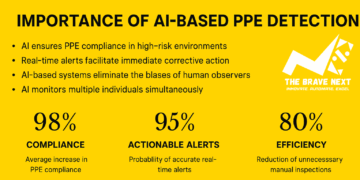In today’s digitally connected world, the boundaries of education are no longer limited to four walls and fixed schedules. The rise of LMS for Higher Education has empowered institutions, educators, and students to embrace a new era of flexible, accessible, and personalized learning. Whether it’s delivering course content, enabling discussions, or tracking performance, an LMS now plays a vital role in transforming how knowledge is shared and absorbed—far beyond the traditional classroom.
With students increasingly relying on digital tools, and educators seeking efficient teaching platforms, the LMS ecosystem continues to grow at an impressive pace. Let’s explore how LMS platforms are extending learning opportunities, enhancing academic outcomes, and redefining higher education.
What is LMS for Higher Education?
A Learning Management System is a cloud-based or on-premise software platform that facilitates the administration, documentation, tracking, and delivery of educational courses or training programs. In the context of higher education, an LMS allows universities and colleges to manage everything from course content and student communication to assessments and analytics—all in one unified system.
The Shift from Traditional to Digital Learning
The pandemic accelerated the transition to online education, forcing institutions to rethink their learning infrastructure. But even post-pandemic, hybrid and remote learning models have persisted—and even grown. LMS for Higher Education has emerged as the cornerstone of this shift, offering scalability, continuity, and access across geographies.
The key transformation is this: Learning is no longer confined to campus. Students can now attend lectures, submit assignments, and engage in collaborative projects from virtually anywhere.
Key Ways LMS Enhances Learning Beyond the Classroom
1. Anytime, Anywhere Learning with LMS Mobile App:
The modern student doesn’t just learn from a laptop. With the rise of smartphones, the LMS Mobile App has become a game-changer in higher education. These apps allow students to:
- Access lectures and study materials on the go
- Receive real-time notifications for deadlines or announcements
- Participate in discussions, quizzes, and polls from their devices
- View grades, track progress, and communicate with professors
By bringing learning to the palm of their hand, LMS mobile apps support flexible and self-paced education, especially beneficial for working students or those in remote areas.
2. Seamless Access to Course Materials and Resources:
Gone are the days when students had to rely on printed handouts or limited library hours. LMS for Students ensures they have round-the-clock access to:
- Recorded lectures and class notes
- eBooks, PDFs, and supplemental videos
- Assignment guidelines and submission portals
- Past exam papers and sample projects
This anytime accessibility encourages deeper learning and supports revision at the student’s own pace, promoting autonomy and accountability.
3. Personalized Learning Paths and Adaptive Content:
One of the standout features of modern LMS platforms is the ability to offer personalized learning. With data-driven insights and student performance tracking, instructors can:
- Recommend extra resources to struggling students
- Create differentiated assignments based on learning pace
- Deliver adaptive quizzes and interactive modules
This personalized approach ensures no student is left behind, and every learner gets the support they need outside the confines of the lecture hall.
4. Streamlined Communication and Collaboration:
An LMS doesn’t just serve as a content hub—it’s also a communication powerhouse. Through forums, chat rooms, announcements, and email integrations, students and faculty can engage in:
- Class discussions and peer-to-peer learning
- One-on-one mentoring and virtual office hours
- Group projects and presentations through collaborative tools
This fosters an interactive learning culture that extends well beyond physical class time, bridging the gap between faculty and students even at a distance.
5. Real-Time Assessments and Instant Feedback:
With LMS tools, evaluations are no longer tied to paper-based exams or delayed grading. Professors can create:
- Auto-graded quizzes
- Instant polls and knowledge checks
- Interactive assignments with real-time scoring
This enables instant feedback, helping students understand their performance and areas of improvement quickly, so they can adjust their study strategies accordingly.
6. Learning Analytics for Better Outcomes:
One of the lesser-known yet powerful benefits of an LMS for Higher Education is learning analytics. Institutions can track:
- Course completion rates
- Student engagement levels
- Drop-off points in online modules
- Grade trends and feedback loops
This data empowers educators and administrators to optimize their teaching methods, tweak course content, and improve the overall learning experience for students—without waiting for end-of-semester reviews.
LMS for Schools vs. LMS for Higher Education: What’s the Difference?
While the core functionality remains similar, LMS for Schools often focuses on teacher-parent communication, attendance, and foundational learning. In contrast, LMS for Higher Education typically supports:
- Advanced academic structures
- Research and thesis submissions
- Multi-disciplinary course management
- Internship tracking and career services integration
Understanding these differences is crucial when selecting the right platform for your institution’s needs.
Conclusion: The Future of Higher Education Is Borderless
As education evolves, institutions must embrace tools that match the needs of today’s digitally native learners. LMS for Higher Education is not just a trend—it’s a long-term solution that promotes flexibility, engagement, and academic success.
By integrating LMS for students, adopting mobile-first strategies through LMS mobile apps, and creating personalized and data-informed learning paths, universities can ensure that learning continues beyond the classroom—and beyond limitations.
If your campus isn’t already using a comprehensive LMS, now is the time to bridge the gap between tradition and transformation.


















